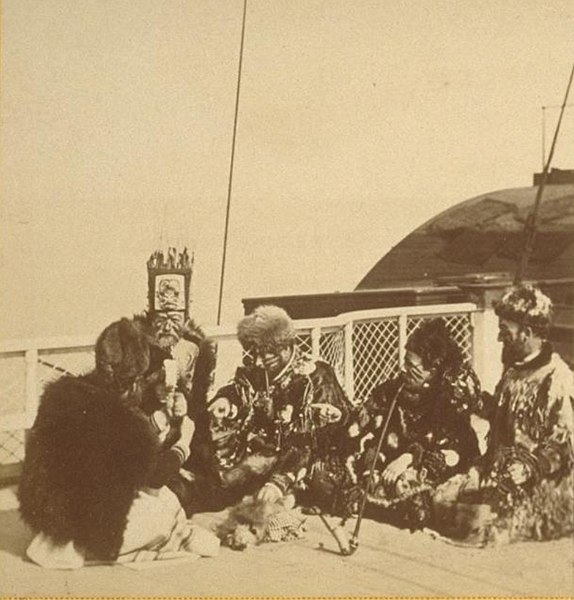Sitka National Historical Park
Sitka National Historical Park is a national historical park in Sitka in the U.S. state of Alaska. It was redesignated as a national historical park from its previous status as national monument on October 18, 1972. The park in its various forms has sought to commemorate the Tlingit and Russian experiences in Alaska.
The Yaadas Crest Corner Pole, one of the many replica totem poles on display at the Sitka National Historical Park. The figures (from top to bottom) are: the Village Watchman, the Raven in Human Form, the Raven, and a Bear.
Detail of a raven head on a totem pole
Pink salmon spawning in the Indian River, Sitka, AK, September 2018
Sitka is a unified city-borough in the southeast portion of the U.S. state of Alaska. It was under Russian rule from 1799 to 1867. The city is situated on the west side of Baranof Island and the south half of Chichagof Island in the Alexander Archipelago of the Pacific Ocean. As of the 2020 census, Sitka had a population of 8,458, making it the fifth-most populated city in the state.
Downtown Sitka in 1984
New Archangel, 1805
Gajaa Héen (Old Sitka), c. 1827. The new Russian palisade atop "Castle Hill" (Noow Tlein) that surrounded the Governor's Residence had three watchtowers, armed with 32 cannons, for defense against Tlingit attacks.
Group of Distinguished Chiefs in Sitka (1868)







